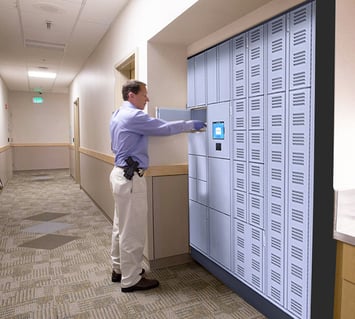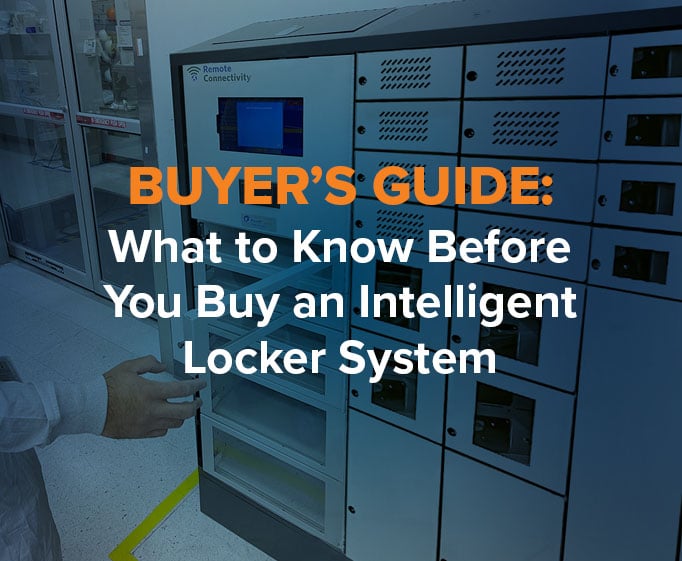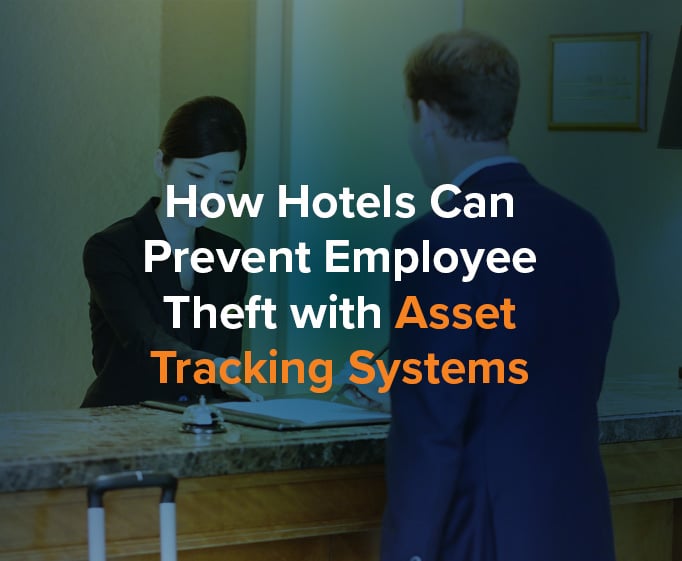By Jay Palter | August 23, 2023
As your organization grows, keeping track of tools, equipment, handheld electronics, and other assets becomes increasingly time-consuming and labor-intensive. That is why so many organizations look for technological solutions to asset tracking. Smart lockers present a promising solution.
Smart lockers are adaptable management systems that safeguard individual equipment and provide valuable asset-tracking data that enhances the workflows in which employees use that equipment. Asset tracking lockers are an investment in your company's productivity. You can redirect your personnel toward more valuable work by automating labor-intensive administrative tasks.
Want to learn more? In this article, we'll explore why smart lockers are leading asset tracking technology, how they support “asset surveillance,” and unpack the benefits better asset tracking brings to organizations of all sizes.
What are smart asset tracking technologies?
Smart technology is business infrastructure and equipment with internal computer systems or sensors capable of managing operations—for example, smart lockers. These lockers monitor the condition of the equipment they store, track who signs equipment in and out, ensure they sign out every kit component they need to do their jobs and monitor the use patterns.
What is asset surveillance?
Asset tracking technology in lockers is called asset surveillance. Asset surveillance systems verify that the correct assets are placed in lockers and can also provide data on their condition. This surveillance gathering can be done over either wired or wireless connections.
Most electronic devices that charge with a USB-type port can identify themselves when plugged inside a locker. This way, they’re both recharged at rest, and their status is automatically verified. Any fault codes are logged and can be sent automatically to service technicians. Alternatively, a wireless tag and reader system can be used.
Wireless tags are attached to or embedded in assets, and the readers are mounted inside the locker cabinets. The readers can even be configured to detect multiple tagged assets within carrying cases. Integrating smart lockers with real-time location services (RTLS) elsewhere in a facility provides live data on where, when, and how those assets are used.
Any asset surveillance aims to provide better insight into the asset and its use. By logging transactions, a smart locker system is already a source of business intelligence. But adding asset surveillance turns assets themselves into information sources. Any organization using lockers obviously cares about asset security. But businesses that benefit from asset surveillance tend to care just as much, if not more, about how their assets are used and by whom.
Why use asset-tracking smart lockers?
Smart lockers equipped with asset surveillance systems and other asset tracking technology improve business performance in several ways.
Enhanced productivity
Smart lockers streamline the tedious administrative tasks of managing a large equipment inventory. They automate transaction tracking, maintenance requests, and problem alerting so that you can redirect your workforce toward more profit-generating activities.
Reduced equipment losses
Automated asset tracking technology virtually eliminates human errors in the tracking process. The risk of missed transaction logging or incorrect data entry is near zero. And in cases where equipment isn't returned by the deadlines you’ve set, the smart locker immediately sends email or text alerts to supervisors, which allows them to initiate the search for misplaced items, significantly improving the prospects of retrieval.
Increased accountability for equipment use
Negligent or malicious behavior is harder to conceal when smart lockers provide precise transaction data and instant loss reporting. Take, for instance, the issue of drug diversion in EMS agencies. By attaching RFID tags to medication vials, the system can promptly alert managers when a vial is missing when EMTs return kits.
New insights into asset utilization
asset surveillance and other asset monitoring provide comprehensive insights into equipment use. You gain access to real-time information about who possesses specific assets, where they’re used, and how. Long-term performance trends can be assessed as well. Smart locker software generates reports that reveal trends that might otherwise go unnoticed. For instance, are all your laptops of a certain model reporting similar hardware issues? Does one employee account for most tool losses during a specific shift?
Monitoring equipment faults
Using wired USB connections, you can monitor the status of stored electronic devices during charging. Many modern operating systems seamlessly integrate with smart lockers to relay crucial service alerts.
Also, you can allow users to report issues through the smart locker interface, which in turn notifies technicians. The smart locker securely holds the device until retrieved by authorized technicians, rather than just sitting idle on a desk or inadvertently reentering circulation.
What are the use cases for asset surveillance?
Using a asset surveillance system lets you build workflows around the real-time availability of different assets. You can restrict access based on the specific staff member signing the asset out, by time of day, or by other criteria. For example, if you need to provision rugged laptops for heavy-duty field use, you may want to rotate sign-outs to distribute wear and tear.
With a asset surveillance system, your smart locker system can verify which laptop is in which locker and how many hours of use each has received. Then the system will only unlock the laptop with the least use.
That’s just one example. A whole range of workflows can be improved.
Verify chain of custody
Smart lockers can always track who signs an asset in or out. But without asset surveillance, they can’t verify what is actually taken or returned from the locker, if anything is returned at all. A disgruntled employee could sign a laptop back in at the locker terminal but keep it with them when they walk out the door on their last day.
If assets are particularly sensitive, expensive, or regulated, a real-time asset surveillance system can confirm whether they’ve been returned. And instantly notify supervisors if they’re not. Without that automated verification, it may not be until the next shift, or even days later, that a mission-critical device is found missing.

Kit component checks
As we mentioned, asset surveillance systems can detect multiple items in hardened carrying cases. Some organizations want—or need—to ensure that individual components are returned, like medication or controlled substances, or government-regulated materials.
Asset surveillance can notify EMTs if life-saving medications are missing from a kit bag before they go on a call. Or notify supervisors if a regulated substance is missing upon return.

Compliance reporting
Some of those regulated materials probably need to be accounted for in compliance reports. Smart locker management apps easily and automatically compile these reports in real-time as asset transactions occur.
Or, as we discussed in a previous smart locker article, alternate forms of asset surveillance, like scales for weight checks, can measure and verify assets upon return. This automates an important compliance task for law enforcement agencies who need to verify whether OC (pepper) spray cans have been used by checking their weight.

Automating service workflows
When a staff member returns an asset, the touchscreen interface on the smart locker can prompt them to log any issues encountered. For laptops, for example, it could be anything from a crashing application to an entirely dead device. That logging triggers an email alert to the IT team and unlocks a designated ‘service’ locker. The asset tracking technology then ensures that the specific device the user signed out is placed in the service locker.
This general workflow—a staff-entered code triggering a specific locker opening—can be used for other assets that need attention. Like supply kits needing restocking, firearms needing maintenance, or delicate instruments needing cleaning.

It’s All Customizable
Asset surveillance is a powerful and very flexible tool you can use for many asset protection strategies. While some businesses clearly either do or don’t need it, many fall into a gray area in between. Others know they need it but aren’t sure how to implement it. Speaking with an expert security consultant may be the best way to determine what works best for your organization.
See what an asset surveillance system can do for your organization.
Subscribe to our blog

Jay Palter
Vice President of Marketing & Partnerships




